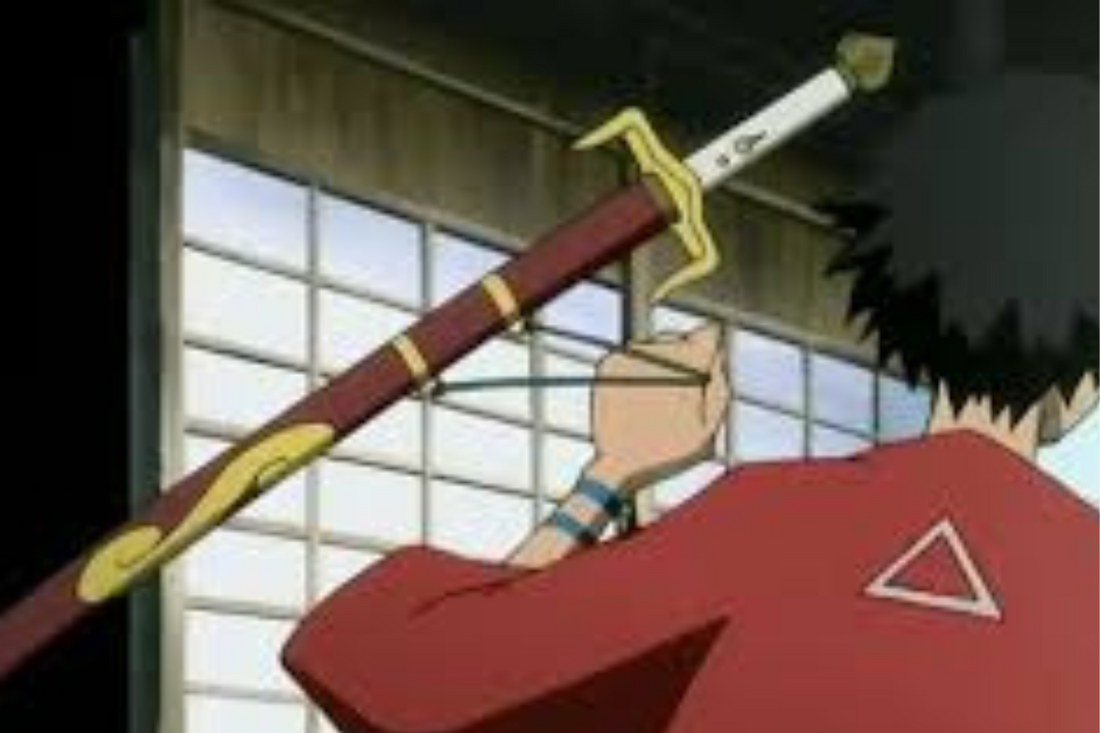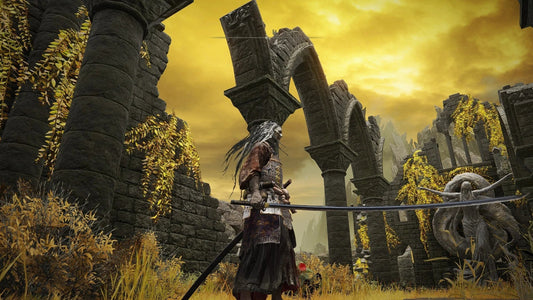
Mugen's Typhoon Swell Sword: A Samurai Champloo Icon
In the stylized, hip-hop-infused world of Samurai Champloo, few elements are as iconic as Mugen himself—and even fewer as captivating as the sword he wields. Known by fans as the Typhoon Swell Sword, Mugen’s blade is a visual and thematic extension of his rebellious spirit, a chaotic dance between traditional Japanese design and international influence.
This isn’t your ordinary katana. Mugen’s weapon is a rare anomaly, breaking almost every rule of samurai etiquette and swordsmithing design. Yet, it remains one of anime’s most fascinating weapons, because it doesn’t just look cool—it tells a story of independence, unpredictability, and survival.
The Sword’s Design: A Wild Fusion of Cultures
Mugen’s Typhoon Swell Sword is a sword that defies classification. It blends characteristics from different eras, regions, and philosophies of sword-making, becoming a one-of-a-kind weapon in anime.
The blade itself features a double-edged design, which stands out in a world dominated by single-edged katanas. This configuration is reminiscent of the historical Japanese kogarasu maru, a rare transitional style of blade that bridged the gap between the early Chinese double-edged swords and the classic curved katana. The double edge allows Mugen to attack from multiple angles, reflecting his unorthodox fighting style.
Equally eye-catching is the sword’s guard. It’s designed to mimic the prongs of an Okinawan sai, a defensive weapon used for trapping and redirecting an opponent’s blade. This design element adds another layer of complexity, allowing Mugen to block, hook, and control enemy weapons during battle.
At the hilt’s end, the brass pommel hints at Chinese or European influence, which stands in stark contrast to the katana’s Japanese roots. This unexpected feature not only adds weight for balance but symbolically represents the blend of global influences that shape Mugen’s character and his fighting approach.
The Sheath and Hidden Dagger
The sheath that houses the Typhoon Swell Sword is as deceptive as the blade it conceals. Designed to make the weapon appear longer than it actually is, the sheath throws off Mugen’s enemies by misleading them about the sword’s true reach. This intentional misdirection works in tandem with Mugen’s erratic movement and combat rhythm, making it nearly impossible for his opponents to predict his strikes.
Inside the sheath lies a hidden surprise—a concealed tantō, a short Japanese dagger that Mugen can use as a last resort. Whether for a quick finishing blow or to catch an opponent off guard, this hidden blade fits perfectly with Mugen’s scrappy, survival-first mentality.
Mugen’s Fighting Style: A Dance of Chaos and Art
Mugen doesn’t follow any martial arts doctrine. He’s a street brawler with moves that resemble breakdancing, capoeira, and unpredictable flips more than any traditional kenjutsu. His style is raw, wild, and chaotic—a perfect match for the Typhoon Swell Sword.
His self-taught technique, known as "Champuru Kendo," mirrors the Okinawan term "chanpuru," which means “mixed.” This term reflects both the blend of combat styles and cultural influences embedded in Mugen’s personality. The Typhoon Swell Sword complements this perfectly. Its double-edged versatility and unique guard give Mugen the tools he needs to execute spinning slashes, offbeat strikes, and even evasive maneuvers that throw off highly trained opponents.
In Mugen’s hands, the sword is more than just steel. It becomes a brush painting erratic strokes across the battlefield—each swing a freestyle performance of brutality and skill.
The Cultural Significance of the Typhoon Swell Sword
Mugen’s sword isn’t just a fictional weapon; it’s a reflection of Samurai Champloo’s core themes—cultural fusion, rebellion against tradition, and the celebration of individuality.
The sword’s resemblance to the kogarasu maru is significant. That particular style of sword, while rare, holds deep historical value as a bridge between eras and cultures. Similarly, Mugen’s sword bridges not only design influences but also cultural symbolism, merging the Ryukyuan roots of Okinawa with mainland Japanese and even international aesthetics.
The sai-like guard connects the blade to Mugen’s Ryukyuan heritage, grounding it in a different martial history than that of the typical samurai. His style, attitude, and even speech diverge from the Edo-period norms portrayed in the anime, making him a living embodiment of cultural hybridity—and the sword serves as the ultimate metaphor for that identity.
The Sword’s Role in the Story
Throughout Samurai Champloo, Mugen’s sword serves as an ever-present reminder of who he is. Unlike Jin’s sleek, traditional katana, which mirrors Jin’s calm and disciplined nature, the Typhoon Swell Sword is a chaotic force—blunt, dirty, and deadly in all the right ways.
Every battle scene in the anime reinforces this symbolism. While Jin uses clean, precise strikes, Mugen uses erratic, spinning maneuvers that throw opponents into confusion. The sword never feels like a polished artifact—it feels like a tool of survival, an extension of someone who’s had to fight for everything they’ve ever had.
It’s no accident that when Mugen fights, there’s rhythm. The soundtrack grooves with hip-hop beats as his blade slices through space, as if he’s breakdancing through battle. The Typhoon Swell Sword doesn’t just accompany his journey—it performs with him.
Real-World Replicas and Legacy
For fans who’ve fallen in love with this iconic sword, several real-world replicas exist that capture the unique look and feel of Mugen’s Typhoon Swell. Collectors can find versions forged from T10 steel with clay tempering and visible hamon lines, reflecting the functionality and flair of the original.
Some high-end replicas feature the extended sheath and hidden tantō, allowing fans to own a piece of the anime’s detail-rich design. These aren’t just cosplay props—they’re tributes to one of the most thoughtfully designed weapons in anime history.
Why Mugen’s Sword Still Resonates
Even after nearly two decades since Samurai Champloo aired, Mugen’s Typhoon Swell Sword remains a topic of fascination among anime fans and weapon enthusiasts. It isn’t just cool—it’s a storytelling device. Every curve, edge, and hidden compartment serves a purpose. It’s a visual representation of rebellion, creativity, and raw survival.
While countless swords in anime have supernatural powers, demonic spirits, or hidden transformations, the Typhoon Swell doesn’t need gimmicks. Its power lies in its design and how it's used. It’s a testament to the idea that the sword doesn’t make the samurai—the samurai makes the sword.




